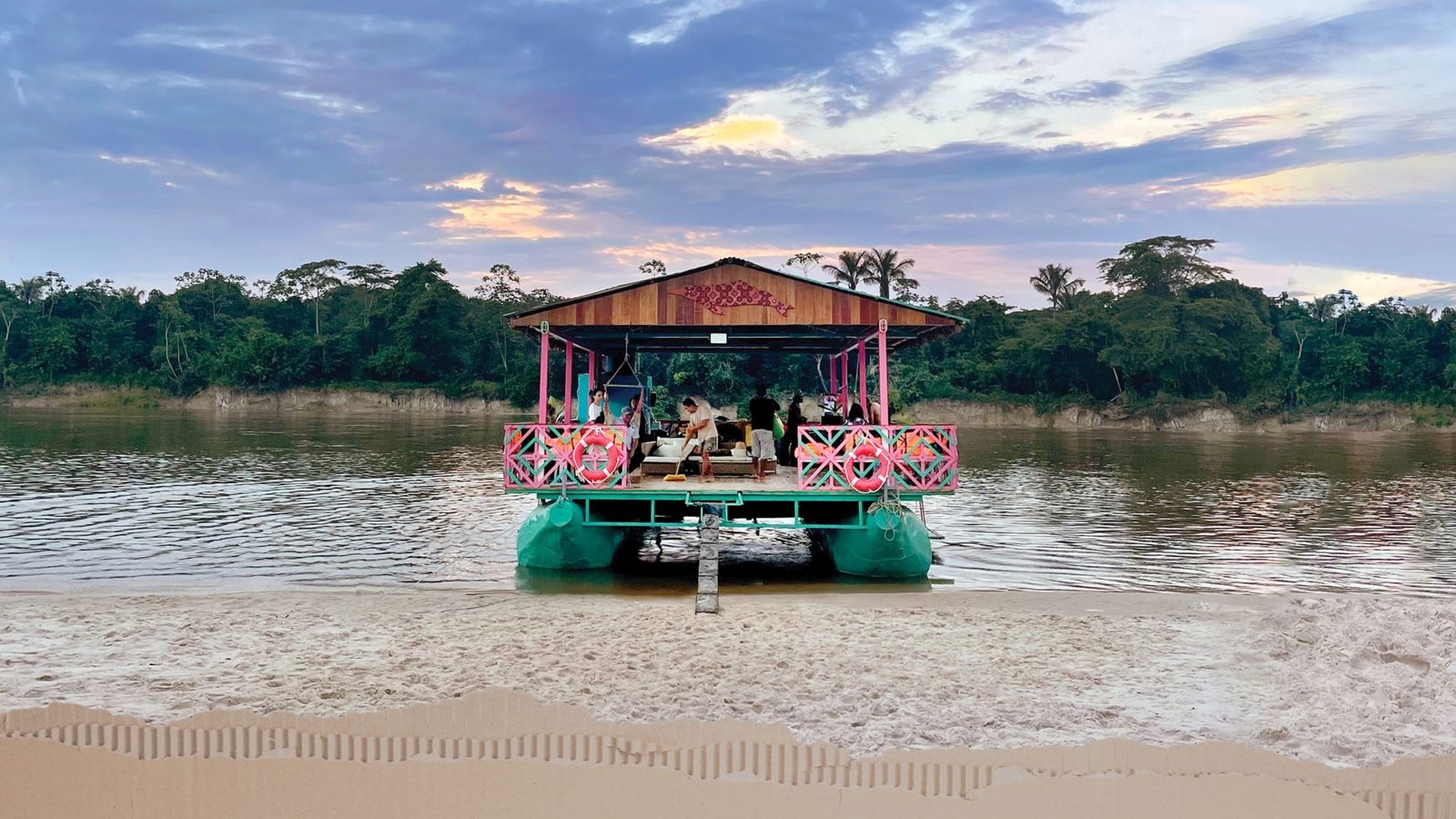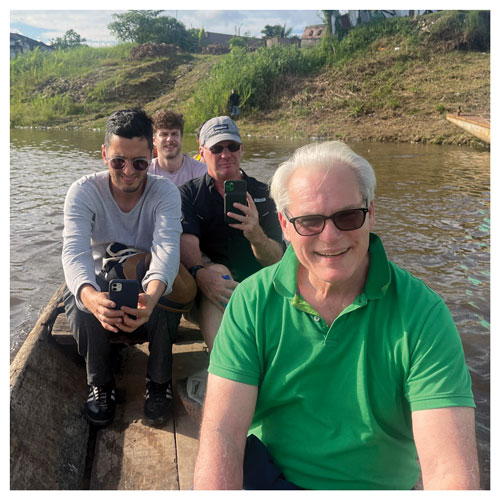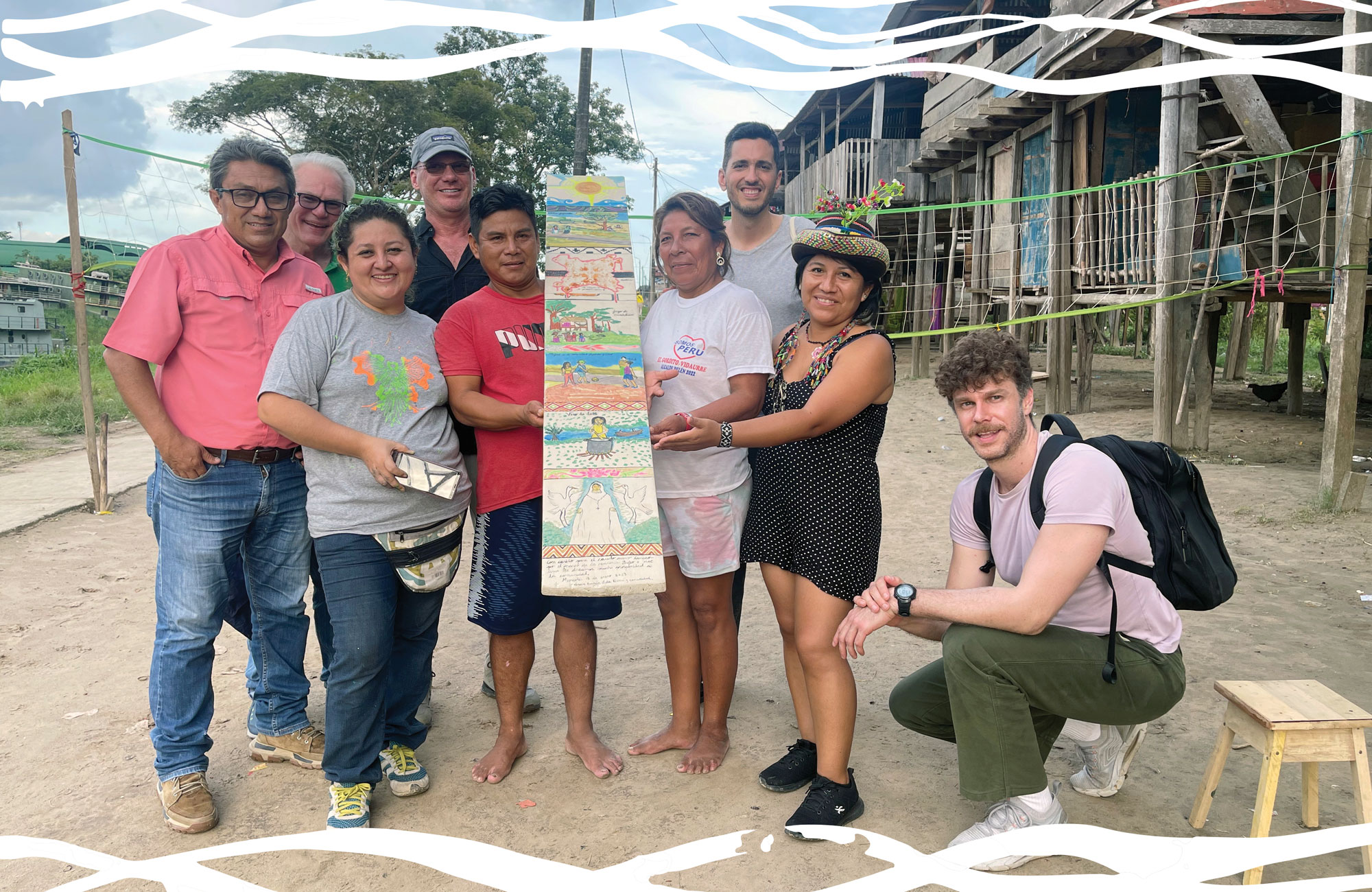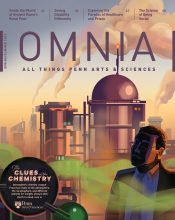Art on the River
Jonathan Katz, Associate Professor of Practice of History of Art and Gender, Sexuality, and Women’s Studies, takes an art exhibition down the Amazon.

This winter found Jonathan Katz floating on a raft down the Amazon River to visit Indigenous communities for an art exhibition.
It was all part of “Dispossessions in the Americas: The Extraction of Bodies, Land, and Heritage from La Conquista to the Present,” a project led by Tulia Falleti, Class of 1965 Endowed Term Professor of Political Science and director of the Center for Latin American and Latinx Studies. The $5 million grant is part of Mellon’s Just Futures initiative. Dispossessions in the Americas aims to document territorial, embodied, linguistic, and cultural heritage dispossessions in the Americas and to recover histories and promote restorative justice.
Katz, Associate Professor of Practice of History of Art and Gender, Sexuality, and Women’s Studies, has been using Mellon Funds to organize art exhibitions in Latin America on various themes. “One of the more interesting ones was in Peru, which looked specifically at the art of Indigenous communities of the Amazon, and Indigenous art-making,” he says.
Working with partners at the Museum of Contemporary Art in Lima, who identified Indigenous artists, Katz produced the exhibition and endeavored to bring it to some of the people who inspired it. “It just seemed wrong to all concerned that an exhibition of Indigenous art would only be shown in the capital city,” he says. “So, we made a plan to take the project onto a raft and travel down the river to the communities that generated the work in the first place.”
Katz spent three days visiting Indigenous villages, accompanied by artists whose work was part of the Lima exhibition. The artists worked with community members to create art using available materials.
One readily available material, as it turned out, was cardboard. There are no recycling facilities in the Amazon, and everyday necessities often come in cardboard boxes. “As a result,” says Katz, “there are huge piles of cardboard that no one knows what to do with, and so we brought along an artist who showed people how to construct sculpture out of cardboard.”
Other artists worked with natural materials such as wood or bark fiber. Katz wanted to make the point that formal artistic materials aren’t necessary to produce artwork. “There was one beautiful work in the Lima exhibition of an Indigenous dugout canoe that was painted in these extraordinary ways,” he says.
What we’ve come to understand is that Amazonian rights and larger planetary interests coincide.
For his next venture, Katz is in the process of raising funds for a pan-Amazon trip, beginning at the river’s headwaters and going all the way to the Atlantic, a journey that will cross many borders. He says the “intrinsic indigeneity” of the communities surrounding the Amazon has become fractured by national boundaries and varied national politics and policies.
“This project represents an attempt to forge a pan-Amazonian identity—which of course predated the arrival of the conquistadors—and to articulate it in terms of environmental necessity,” says Katz.
He expects the journey will take about four months and will require a more substantial vessel suitable for dangerous stretches of the river. Environmental concerns have also prompted Katz’s team to rethink the fuel that powers its next boat.
“We decided we couldn’t do it with another gasoline-powered vessel. We are now working with a series of projects to develop a solar-paneled vessel that will be entirely emission-free in its movement down the Amazon. What we’ve come to understand,” Katz says, “is that Amazonian rights and larger planetary interests coincide.”





